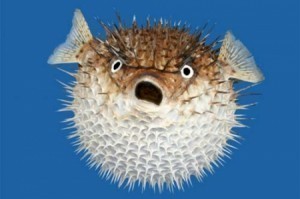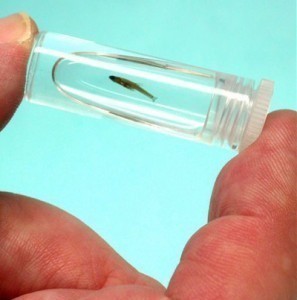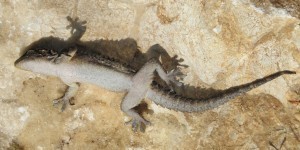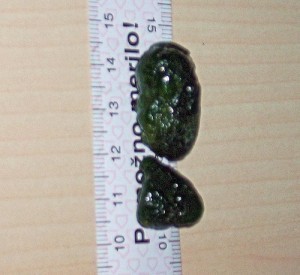Size of a Blowfish
The size of the blowfish can reach 100 cm (39 inches), although  many of them do not reach that length. Strictly speaking, the puffer fish and blowfish are not the same, but are very closely related. But in general terms, blowfish and puffer fish are used interchangeably.
many of them do not reach that length. Strictly speaking, the puffer fish and blowfish are not the same, but are very closely related. But in general terms, blowfish and puffer fish are used interchangeably.
Classification
The blowfish belongs to the Tetraodontiformes family. The other species in the family are the balloonfish, sea squab, bubblefish, honey toads, globefish, toadies, toadfish and swellfish.
The species have many similar characteristics. This includes the big teeth which are connected to the lower and upper plate. These are used by the fish to squash the mollusk’s shells. The mollusk, along with the red worm, makes up its diet.
Physical Characteristics
The small size of the blowfish is hardly indicative of its toxicity. The puffer fish is the second most toxic vertebrae on the planet. The inner organ and skin are extremely poisonous to people. The tetraodontidae family has over 120 puffer species divided into 20 genera. The most assorted types are found in the tropics.
Defenses
Even though the fish is slow moving, it has unique properties that help it deal with predators. When faced by a predator, the fish can fill their bellies with air or water. This will make them bigger and nearly globular. A pursuing predator will suddenly find its prey getting larger. This gives the blowfish time to escape.
When the fish inflates out of the water, it makes them toxic. This is true whatever the size of the blowfish may be. Any predator that attempts to eat the fish may get poisoned. Most of the toxin is found in the liver and ovaries. These toxins can also be found at the skin.
It should be noted that the neurotoxins in the blowfish are not necessarily toxic to other fish. Many blowfish are eaten by sharks and lizardfish with no visible ill effects. There are also species that are not poisonous, like the Takifugu oblongus.
Other Features
The puffer fish usually has a dull color, but several of them have vivid colors. Many types of puffer fish have the ability to change their color and match it with their environment. This is very similar to the ability of the chameleon.
Breeding
Many of the fish in the Tetraodontidae family spawn when the female is pushed to the surface by the male. The eggs will hatch in four days. The yellow larvae have some reddish marks. Ten days will elapse before the spines develop.
After three weeks, the fin rays, teeth and fins will be present. The yellow colors disappear and brown or olive take its place. Dark patches will also manifest. The exact function of the spots is not clear, but some scientists believe it protects the fish from predators.
The size of the blowfish and its poisonous properties has not deterred some people from eating it. In Japan, the blowfish is regarded as a delicacy. The fish is prepared by skilled chefs, so there is no danger of poisoning.





